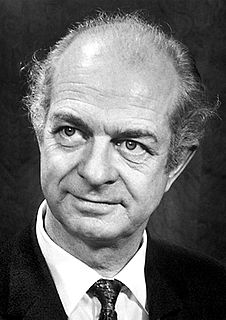
Linus Carl Pauling was an American chemist, biochemist, chemical engineer, peace activist, author, and educator. He published more than 1,200 papers and books, of which about 850 dealt with scientific topics. New Scientist called him one of the 20 greatest scientists of all time, and as of 2000, he was rated the 16th most important scientist in history. For his scientific work, Pauling was awarded the Nobel Prize in Chemistry in 1954. For his peace activism, he was awarded the Nobel Peace Prize in 1962. He is one of five people to have won more than one Nobel Prize. Of these, he is the only person to have been awarded two unshared Nobel Prizes, and one of two people to be awarded Nobel Prizes in different fields, the other being Marie Curie.
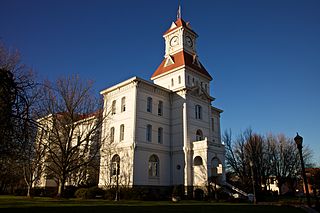
Corvallis is a city and the county seat of Benton County in central western Oregon, United States. It is the principal city of the Corvallis, Oregon Metropolitan Statistical Area, which encompasses all of Benton County. As of the 2020 United States Census, the population was 59,922. Corvallis is the location of Oregon State University and Good Samaritan Regional Medical Center. Corvallis is the westernmost city in the contiguous 48 states with a population larger than 50,000.

Oregon State University (OSU) is a public land-grant, research university in Corvallis, Oregon. OSU offers more than 200 undergraduate-degree programs along with a variety of graduate and doctoral degrees. Undergraduate enrollment averages close to 32,000, making it the state's largest university. Out-of-state students make up over one-quarter of the undergraduates and an additional 5,500 students are engaged in graduate coursework at the university. Since its founding, over 272,000 students have graduated from OSU. The Carnegie Foundation Classification consistently places Oregon State in their most selective tier, "Doctoral University – Very high research activity" and since 2010 has also awarded it with the prestigious "Community Engagement" distinction, making it one of only 28 schools in the nation to hold both.

The Oregon–Oregon State football game is an American college football rivalry game played annually in the state of Oregon between the Ducks of the University of Oregon in Eugene and the Beavers of Oregon State University in Corvallis.
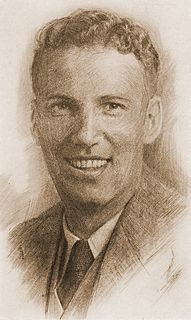
Amory Tingle "Slats" Gill was an American college basketball coach, the head coach at Oregon State University in Corvallis for 36 seasons. As a player, Gill was twice named to the All-Pacific Coast Conference basketball team. As head coach, he amassed 599 victories with a winning percentage of .604. Gill was also the head coach of the baseball team for six seasons and later was the OSU athletic director.

Oregon State University's College of Engineering is the engineering college of Oregon State University, a public research university in Corvallis, Oregon. U.S. News & World Report ranks OSU's engineering college 73rd in the nation for 2022. The ranking makes the college one of the top two in the Northwest, while the college's nuclear engineering school ranks 12th nationally.
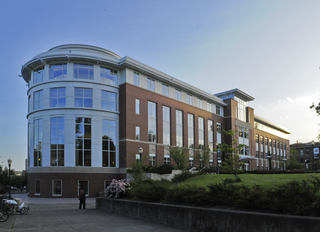
The Valley Library is the primary library of Oregon State University and is located at the school's main campus in Corvallis in the U.S. state of Oregon. Established in 1887, the library was placed in its own building for the first time in 1918, what is now Kidder Hall. The current building opened in 1963 as the William Jasper Kerr Library and was expanded and renamed in 1999 as The Valley Library. The library is named for philanthropist F. Wayne Valley, who played football for Oregon State.

Ava Helen Pauling was an American human rights activist and wife of Nobel Prize winner Linus Pauling. Throughout her life, she was involved in various social movements including women's rights, racial equality, and international peace.

William Herbert "Will" Bloss, Sr. was the first American football coach at Oregon Agricultural College in 1893 and again in 1897. He also was the quarterback of the 1893 team. Bloss was heralded by contemporaries as a "great coach" and one of the fiercest players on the field of the first two decades of football in the Pacific Northwest.
John Davidson Letcher was an American academic and an acting president of Oregon State University. He served as the acting president for 4 months in 1892, upon the death of the second president Benjamin Lee Arnold.

The Memorial Union (MU) is the student activity center at Oregon State University in Corvallis, Oregon, United States. It contains a ballroom, cafeteria, bowling alley, shops, and study areas. It was designed by Oregon Agricultural College graduate Lee Arden Thomas.

William Jasper Kerr was an American academic in the states of Oregon and Utah. A native of Utah, he served as president of Oregon State University), known then as Oregon Agricultural College, Brigham Young College, and Utah State University), known then as Utah State Agricultural College. He later served as the first chancellor of what became the Oregon State Board of Higher Education, known then as the Oregon State Board of Higher Curricula. The administration building at Oregon State University is named in his honor.

Lee Arden Thomas (1886–1953) was an architect in Bend and Portland, Oregon, United States. He graduated in 1907 from Oregon State University. He completed many projects in Bend, often partnering with local architect Hugh Thompson. His work in that area includes the planning for Bend Amateur Athletic Club Gymnasium (1917–1918), Redmond Union High School, and the Washington School in Corvallis.
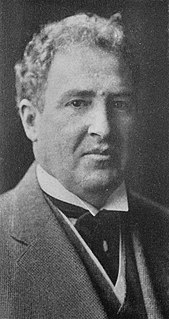
John Virginius Bennes was an American architect who designed numerous buildings throughout the state of Oregon, particularly in Baker City and Portland. In Baker City he did an extensive redesign of the Geiser Grand Hotel, designed several homes, and a now-demolished Elks building. He moved to Portland in 1907 and continued practicing there until 1942.
August Leroy Strand was an American entomologist who served as President of Montana State University from 1937 to 1942, and as President of Oregon State University from 1942 to 1961.
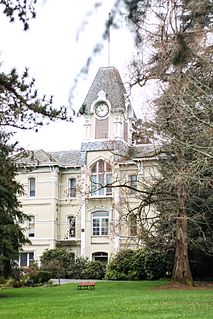
Community Hall was the first building constructed on the Oregon State University campus in Corvallis, Oregon and the oldest structure on its campus today. Its original name was simply the "Administration Building" while the university itself was using the name under which it was first organized: Oregon State Agricultural College. It is situated on a gentle slope called "College Hill," just west of the city's commercial center on the west bank of the Willamette River, there anchoring what remains of the school's original buildings on the "Lower Campus" : Apperson Hall (1899), Benton Annex (1892), Education Hall (1902) and Gladys Valley Gymnastics Center (1898).
The College of Liberal Arts is a liberal arts college at Oregon State University, a public research university in Corvallis, Oregon. It is the second largest of the 11 colleges at the university and offers 23 undergraduate degrees, 12 master's degrees, and 5 doctoral degrees.

Oregon State University Army ROTC is an ROTC Battalion assigned to Oregon State University in Corvallis, Oregon. Its mission is to train Cadets in basic military leadership and commission them as 2nd Lieutenants upon the completion of a bachelor's degree. Founded in 1873, the ROTC Battalion has continued to serve the nation and US Army Cadet Command and was given the nickname, "The West Point of the West" after it produced more commissioned officers than any other ROTC Battalion in the USA during World War II.

















